The Zantiks AD unit is recommended when bench space is a concern. For example, when running a large number of systems at once is necessary. Its smaller size in comparison to the Zantiks LT allows for many multiples of the systems to fit in a more compact space.
The Zantiks AD is ideal for measuring the behaviour of small fish and rodents and other similarly sized animals.

Benefits
All Zantiks systems are built along the same principles, enabling high throughput and easy-to-run experiments. The benefits of choosing Zantiks are that each unit:
- An isolated and stable testing environment
- Networked and controlled via the web browser
- Live video view and real-time video recording
- Includes software, uses the Zanscript language for experiment specification
- Real-time results processing and output in .csv format
- Integrated camera, computer, experimental chamber and built-in stimuli
- Takes up little bench space
- Requires only 12V power and a network connection
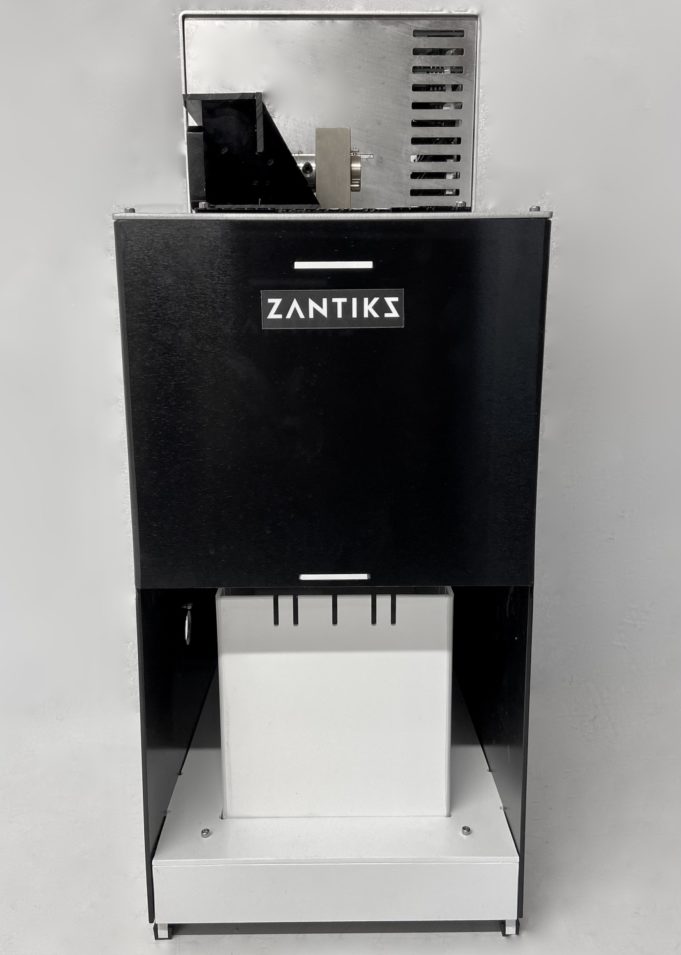
Target studies
The Zantiks AD unit is suitable for but not exclusive to:
- Tracking model organisms in experimental environments
- Open field
- Y-maze
- Novel tank diving
- Light/dark box
- Training model organisms (with food reward) in operant tasks
- Tracking multiple singly housed organisms
Please contact us if you have any specific behavioural studies in mind.
Zantiks AD kit
Overall unit size (external, approx. mm): 220 width, 300 length, 500 height
Tank / cage size (internal, mm): 140 width, 200 length, 150 height
Technical specification
| Integrated unit | AD for rodents | AD for fish |
| Computer | ✔ | ✔ |
| Camera | ✔ | ✔ |
| Overhead lights | ✔ | ✔ |
| Screen (for visual stimuli) | ✔ | ✔ |
| Sound card (for audio/sound stimuli) | ✔ | ✔ |
| Motor (operation of peristaltic pump or solid food delivery) | ✔ | ✔ |
Built-in stimuli
- Overhead illumination – colour, brightness and duration can be specified with ms accuracy
- Can be used for ambient lighting, circadian rhythm entrainment and light flashes
- Solid and liquid delivery – both solid and liquid food reward, as well as chemical liquid stimuli can be supplied
- Visual stimuli – supplied on a screen from underneath the tank. These can be specified with sizes, shapes, colours, locations and bitmaps
- As they are displayed via a screen, response times and update times can be controlled up to the 60Hz refresh rate of the display
- Audio stimuli - allows playback of *.wav files through a range of speaker options.
- Suitable for startles, predator cues, vocal calls of conspecifics, etc.
Included equipment for fish
- One tank with mesh lid – approx. 150mm H; 200mm D; 140mm W and with clear bottom and opaque white sides
- Two stainless steel shocking plates with cable and testing LED strip -For use as a mild shocking stimulus in aquatic environments
- Controllable voltage and duration
- Brass feeder mechanism for solid food delivery - attaches to the motor
- Peristaltic pump unit for liquid delivery - attaches to the motor
- We recommend you use the following tubing with it: 2mm internal diameter, 4mm external diameter silicone tubing
- External light with an extra connector
- Tank inserts to create multiple different arenas:
- Arena lengthwise dividing inserts x 3
- Arena widthwise dividing inserts x 3
- Arena dividers can be used to create up to four separate testing compartments for tracking four fish in one unit
- Light/Dark inserts x 1
- Open base lengthwise inserts x 2
- Open base lengthwise inserts x 2
- 5-aperture insert x 1
- Creates five distant entry points at the opposite end of the tank from food delivery. The five apertures act in a similar fashion to the five nose poke holes in rodent tasks
Please contact us for additional inserts and tanks or if you would like bespoke inserts for your experiment.
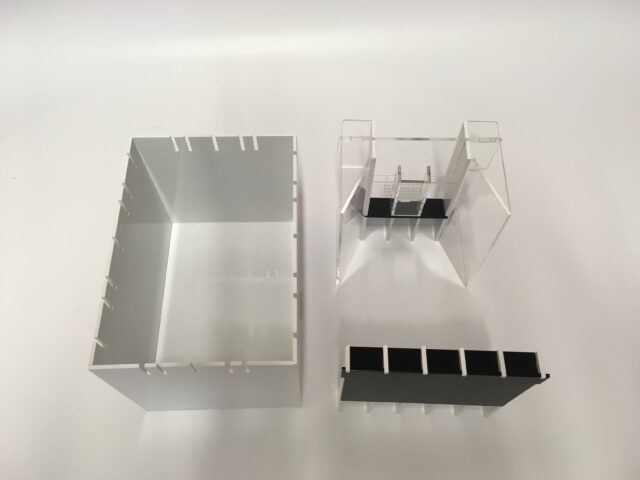
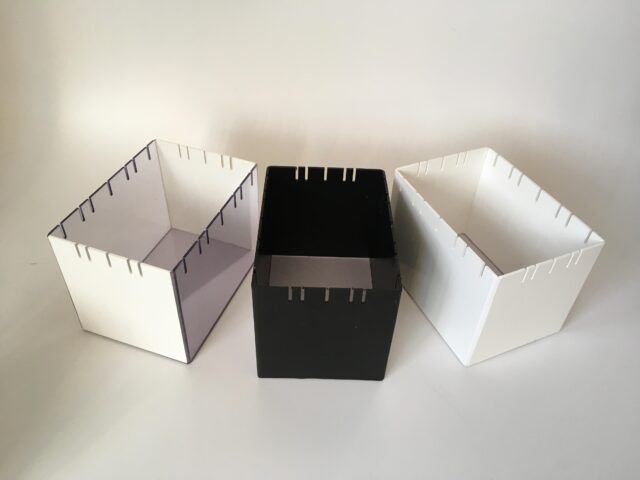
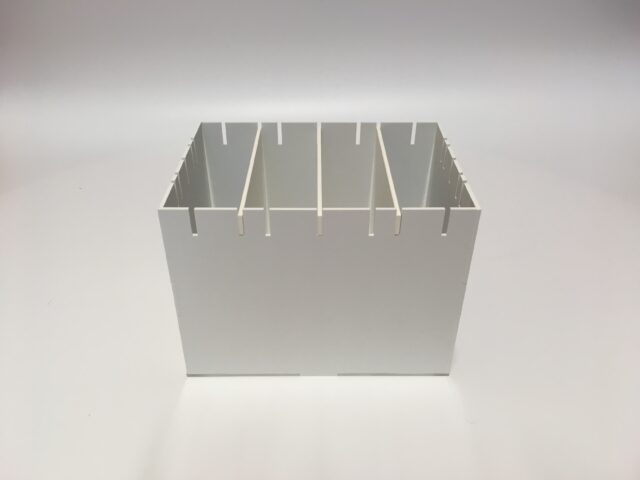
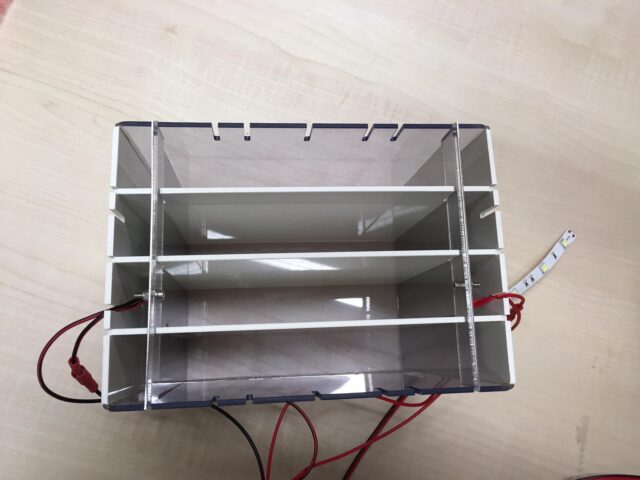
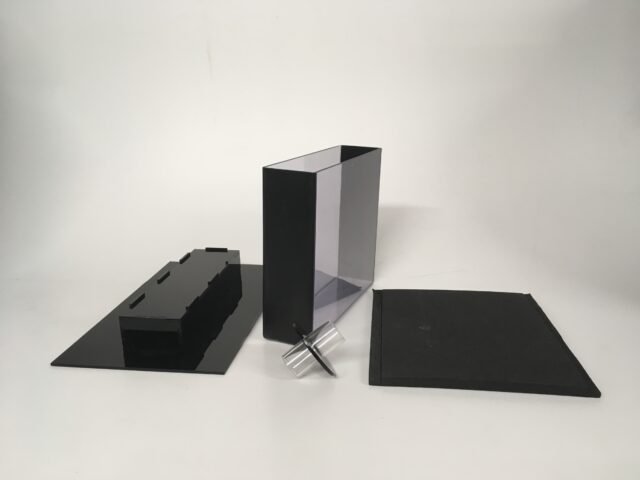
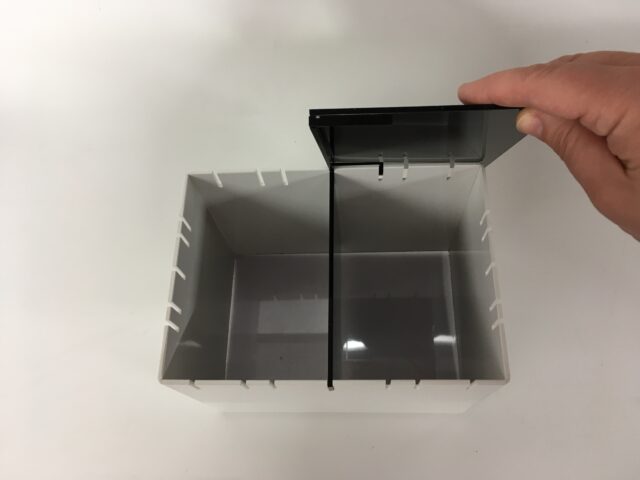
Included equipment for mice
- One cage with lid - approx. 150mm H; 200mm D; 140mm W and with clear bottom and opaque white sides
- Pellet feeder mechanism for solid food delivery - attaches to the motor
- Peristaltic pump unit for liquid delivery - attaches to the motor
- We recommend you use the following tubing with it: 2mm internal diameter, 4mm external diameter silicone tubing
- External light with an extra connector
- Cage inserts to create multiple different arenas:
- 5-aperture insert x 1
- Two-choice insert x 1
Please contact us for additional inserts and tanks or if you would like bespoke inserts for your experiment.
How to Operate
Fully networked, Zantiks units are supplied with a router and controlled via a web browser, allowing users to operate them from their own phone, tablet, laptop, PC, Mac or Chromebook.
From the web browser on your device you can access the Zantiks Control Console to write & edit scripts, start & stop chosen services (i.e. experiments), view the live video feed, and download results and media files
For details on how to use the Zantiks Control Console, see the Zantiks Control Console manual.
High-throughput studies are easy to conduct with multiple units. All units are operated via the same web browser and can run identical experiments consecutively.

Tracking and video recording
Tracking of up to 4 singly housed individuals of appropriate model organisms can be carried out in the AD using the tank inserts. Live tracking up to 30fps. Video recordings can be made simultaneously.
Pavlovian aversion learning with a grey vs check background for adult zebrafish
A mouse explores the AD unit, the cage has a food hopper and a 5 aperture inserts
Software features
All Zantiks data output is exported live and in realtime as a *.csv file. The system can export up to four separate data files and four separate video files simultaneously. Software features and output options include:
- Distance travelled (mm)
- Mean pixel change
- Zone use
- Time spent in zone (sec)
- Distance travelled in zone (mm)
- Number of entries into zone
- XY coordinate data
- XYZ coordinate data
- Heatmaps
- Track trace drawing
- Realtime & timelapse video
- Image capture
- Video labelling
All Zantiks systems are operated via Zanscript proprietary scripting language which allows for:
- Open loop scripting
- Closed loop scripting
- Operant training/learning
- Control of all stimuli with millisecond accuracy










